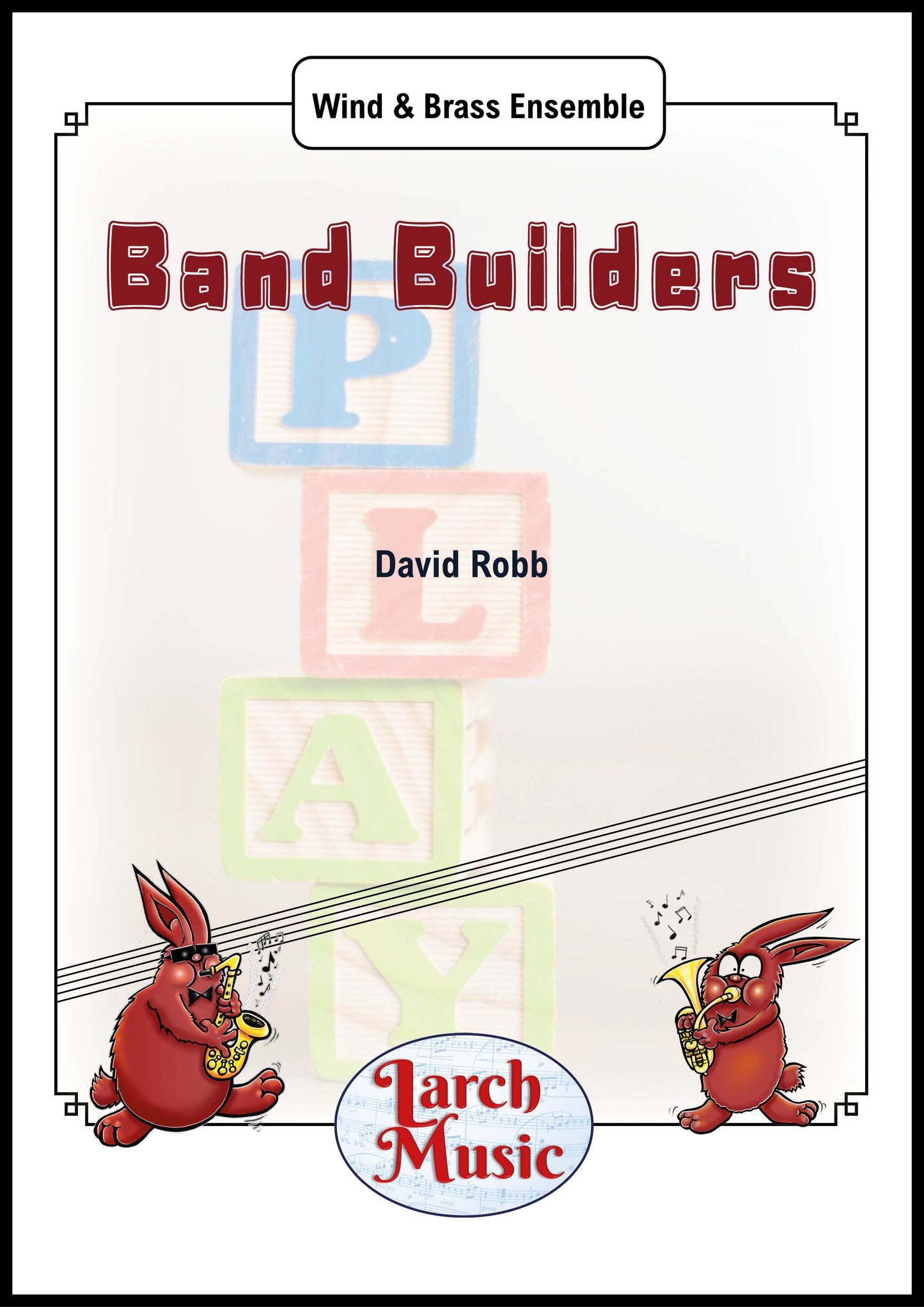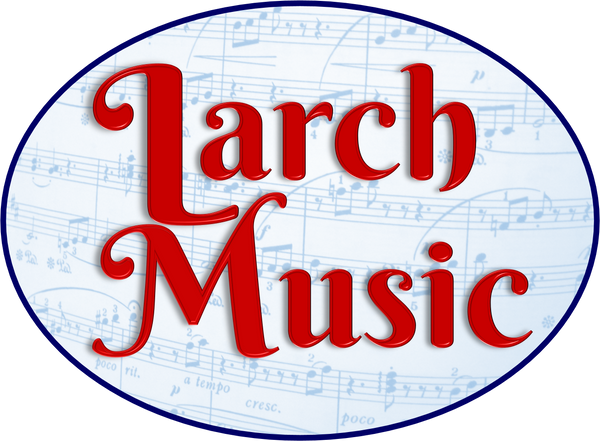Larch Music Ltd.
Band Builders - Junior Wind / Brass Band - LM545
Band Builders - Junior Wind / Brass Band - LM545
Couldn't load pickup availability
COMPOSER : David Robb
The Band Builders is designed to give beginner instrumentalists a first experience of ensemble playing and building the band. The music is intended to be stimulating yet enjoyable to play. Each instrumental part will aid that particular instrument with both timing intonation and tuning.
The book is in sections, each with a particular objective involved
Building Blocks
Each of the following exercises to be varied in tempo, articulation, dynamic etc. at the discretion of the conductor/director
These exercises are designed to give the band a nice, comfortable start to the rehearsal, but still focussing on playing confidently together.
As it states on the music, each exercise is to be varied in tempo, articulation, dynamic etc at the discretion and direction of the conductor/director.
So for example, Ex.1 could be played forte, legato and moderato.
The aim is for as much variety as possible to have everyone concentrating and listening to each other from the start of the rehearsal, blowing fully through each note with every change of style.
They also give an opportunity to rehearse important performance disciplines such as starting and ending together as well as trying tempo changes such as accelerando and rallentando.
Buzzing Builders (Brass Only)
Play the note, then carefully take out your mouthpiece during the rest, then buzz the note on your mouthpiece. Replace your mouthpiece carefully during the next rest, then repeat as written.
Breath Builders
Here we have an opportunity to work on breath control and phrasing. A steady Andante tempo is required, giving a full bar count in at the beginning so that a big, slow, open inhalation can be taken.
Working on controlling the output of air with an equal flow throughout each phrase.
Tuning and intonation can also be covered when using these exercises.
Rhythmic Warm Ups
These exercises focus on playing rhythmic lines together, with all of the notes played at the same time.
Sub-division of the beat is an essential tool in this type of playing and will make these much easier to play for both brass and percussion.
The exercises become slightly trickier as you go through and they also provide another chance to work on using different tempi.
This is where a good drummer comes in very handy!
Tongue Twisters
Now we move onto developing clear, crisp tonguing and articulation, not overworking the tongue but allowing it to sit on top of a good supported airflow.
It may be best to begin working on this at steady, manageable tempo, gradually increasing it as the band becomes more confident in their articulation while always playing together and listening to each other.
Keep working on the breathing.
Flying Fingers & Slides!
I have always found these to be the most popular exercises with the band.
They seem like a bit of a jumble of notes, but once you have been through them a few times, they don’t seem so bad.
The main focus here is again, good airflow through the notes but make sure that valves/keys are pushed down firmly and slide positions are moved swiftly between note to avoid any sense of sliding between notes.
Also, make sure you look at the key signature, look out for the notes that need more valves/keys and less used slide positions.
Again, a steady tempo is best to start with, but as time goes on it can be increased as everyone becomes more confident.
Interval Jumps
An aspect of melody which I feel is often overlooked are intervals. Working on these exercises help to develop the performers’ aural awareness of what the next note sounds like, helping to develop pitch recognition.
Once the band has played this a few times, they should be getting a sense of the “tune”.
This is a good time to then have them sing their parts, if you can sing it, you can hear it and you can play it. This also helps reduce the amount of “split” note being played.
One thing to look out for in this exercise is to keep the tempo consistent in the second half, as Players can tend to rush this section.
Totally Triplets
Returning to rhythm, these two little melodies feature the use of triplets in different shapes and sizes.
Again it is all about sub-division of the beat, but in a different way to the way used previously.
Here, it is important that each note of the triplet is the same length to keep it moving forward, many times the rhythm can be affected by notes becoming longer that they should be.
However, these tunes can be very enjoyable to play.
One Note Zumba
Returning to rhythm, these two little melodies feature the use of triplets in different shapes and sizes.
Again it is all about sub-division of the beat, but in a different way to the way used previously.
Here, it is important that each note of the triplet is the same length to keep it moving forward, many times the rhythm can be affected by notes becoming longer that they should be.
However, these tunes can be very enjoyable to play.
Hymn Tunes
To bring everything together that has been covered in this collection, I have included arrangements of two hymns “Sandon” and Eventide” which are given in a more harmonic band style.
Hymn tunes are used by many bands to begin their rehearsals, to bring together all of the points we have covered.
Perhaps the most important aspect of this is that everyone in the ensemble listens to each other while they are playing, as well as looking at the conductor/director.
Another important component in hymn playing is breathing, where to breathe and taking as big a breath as you comfortably can.
Always play with the best sound that you can make, this is very important in slower, smoother legato playing which is often needed in hymn playing.
Important Relaxation of Copyright Restrictions.
Larch Music have relaxed their copyright control of the parts in this series.
Where you have several players and need more than one part you may make photocopies.
A legal set of parts must always include the originals. You may not photocopy the score and the production of a complete new set of parts for use with a second group remains strictly illegal.
Infringements of Copyright will result in legal action being taken.
Share


